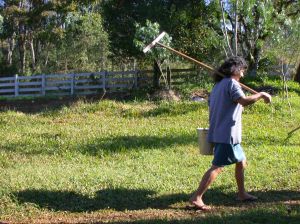Women’s Health Week took place from May 12 to May 18 in 2014, and the National Institute for Occupational Safety and Health (NIOSH) took the opportunity to outline some of the safety and health issues that women experience at work. The biggest workplace hazards differ for men and women, but female workers do face significant risks on-the-job. 
If you or a loved one is hurt at work, you have legal rights. A Boston workers’ compensation lawyer can represent both men and women injured on the job, as well as surviving family members of those killed in workplace accidents.
Focus on Safety for Female Workers
Safety BLR reported on some of the top hazards that NIOSH identified as affecting females in the workplace. Women, in general, tend to face a greater risk of carpal tunnel, tendonitis, respiratory diseases, anxiety and stress disorders, and infectious diseases. Pregnant women also face special problems while carrying their fetus since there are certain workplace conditions and hazards that can impact a developing child in unhealthy ways.
Workplace violence is also an issue for both men and women, but is a bigger issue for female workers. Homicides cause 27 percent of workplace fatalities among women, which makes it the second leading cause of death on-the-job. While men who die from workplace violence are usually victims of a robbery, women are far more likely to be killed by someone they know. Two out of every five workplace homicides that resulted in fatalities for female workers were perpetrated by a relative. In most cases, this relative was either a current or a former spouse, or was a domestic partner.
Job-stress is also a serious concern for women, as female workers suffer from almost twice the level of stress-related illness as male workers do. Job stress can cause serious conditions including heart disease, depression, muscle disorders, bone disorders and burnout.
Women are more likely to have jobs that are contingent, temporary, contract-work or part time, which adds to the dangers that they face on-the-job. Temporary work typically comes with less job security, and women in temporary or part-time jobs often have fewer benefits than their male counterparts in full-time work. As a result, female workers may be more reluctant or afraid to report injuries that they incur while doing their jobs.
Preventing injuries among women in the workplace should focus on identifying the likely causes of injuries and taking steps to correct them. It is unclear why women have higher rates of musculoskeletal disorders then men in the workforce, but improving the ergonomics of the workplace through changing tools or work methods may be helpful in preventing carpal tunnel and related problems.
Personal protective equipment (PPE) may also be designed for average-sized men and thus may not fit women as well. This can result in inadequate protection from hazards, especially when the female worker is using work gloves, work boots or respirators.
Employers need to take these special risks faced by female workers into account when considering a safety plan for the workplace.
If you are injured on the job in Massachusetts, call Jeffrey Glassman Injury Lawyers for a free and confidential consultation to discuss your workers’ compensation claim– (617) 777-7777.
More Blog Entries:
OSHA Wants to Expand Safety Inspections to Small Businesses, March 25, 2014.
 Massachusetts Workers Compensation Lawyers Blog
Massachusetts Workers Compensation Lawyers Blog

